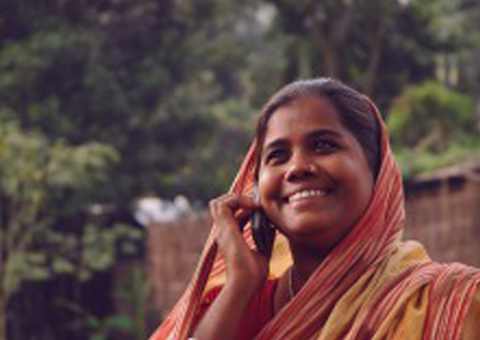Blog
Impacting Women’s Lives through Digital Payments

A garment factory owner in Dhaka complained to us that he pays monthly wages by driving a giant, cash-filled truck up to the factory and distributing the cash to the workers, mainly women. The scenario underscores why we need to replace physical cash with electronic payments and encourage the use of bank accounts. It’s doubly important for women – and why we’re conducting a big field study in Bangladesh on this topic.
Some background is in order. Many of the women waiting in line at that factory risk losing control over their hard-earned pay. One woman, for example, told us her mother-in-law stands outside the factory gate on payday to demand a cut of her wages. Other women, once home, face pressure from husbands and other family members to hand over cash.
Why does this matter? Field experiments find that providing access to personal formal savings instruments increases female empowerment (Ashraf et al., 2010) and consumption and productive investment of female entrepreneurs (Dupas and Robinson, 2009). A large body of empirical literature suggest that income in the hands of women, compared to men, is associated with larger improvements in child health and larger expenditure shares of household nutrients, health, and housing (for an overview, see Duflo, 2012).
Our field study aims to examine these and other important issues, so that we can bring more people into the financial system – a process known as financial inclusion.
To begin, we’re giving electronic payroll accounts to thousands of garment workers in Dhaka. They’ll have their paychecks deposited automatically into that account.
In Bangladesh, just 37 percent of men and 26 percent of women have a bank account. The nation’s large population of unbanked workers must rely on cash for everyday transactions. They can’t easily save for retirement, their child’s education, or a financial shock like a job loss. Without access to formal credit, they must borrow at high interest rates in the informal sector.
Around the globe, some 2.5 billion people are cut off from digital financial systems. Researchers and policymakers view the migration of poor households to electronic payment platforms as an essential ingredient in expanding financial inclusion.
A case in point: Imagine if the workers at that garment factory had their pay deposited electronically into an account. Female workers, for one, would have more control over how that money is spent. And because the payments would be received directly by the women, the amount and timing would be private information. That would mean less leeway for meddling family members.
Through our study, we hope to provide evidence on an important question for research and policy on financial inclusion: Can employers help their workers become financially literate and integrated into the formal financial sector by offering electronic wage payments, payroll accounts, and other financial products such as commitment savings accounts.
In particular, we’ll evaluate the impact of electronic wage payments on savings, consumption, financial literacy, budgeting, the use of financial products and services, as well as productivity. We’re drawing our data from among some 3,000 garment workers from four factories in Dhaka.
About a third of the workers will serve as a control group and receive their monthly wages in cash. The rest will get either a no frills bank account and monthly wage payments into the account, an ATM installed on factory premises, and a series of training sessions on how to use the account and the ATM machine, or direct payment to a mobile money account.
The workers aren’t the only ones who stand to benefit from owning an account. Think of the factory owner who must pay about $2.5 million US dollars on payday in 500 taka notes, each worth about $5. The owner must pay for trucks to deliver the cash, as well as security guards. He also must shutter the production line for two days each month while people wait in line.
We don’t have any final results yet from our study, which is funded by the World Bank, the SME Finance Forum, the Asian Development Bank, and Innovations for Poverty Action (IPA), a research organization. But here’s what we’ve learned from pilot projects in Bangladesh:
- Seventy-three percent of workers had a savings goal in mind when they started work.
- After paying for things like rent, utility bills, loans, and transfers to distant family members, workers have just 25 percent of their earnings to get through 25 days of monthly expenses and save.
- Eight percent of workers report having to cut meals and 21 percent report not having enough money for food because they run out of money by the end of the month.
Understanding the implications and benefits of banking these households through electronic transfers is a top priority.
The study’s results will be valuable for governments and industrial and financial sector participants. First, our findings can help guide small and medium enterprises in developing countries who want to make their business more efficient while helping their employees to develop basic financial capability.
Second, our study can help banks and other financial institutions design effective electronic payroll products that encourage greater use of deposit accounts. Even where account penetration is high, encouraging the active use of banking services often remains a challenge.
More broadly, our study will give financial service providers valuable information on how to best sequence and phase in the transition to cashless wage payments and add-on financial services.
Authors: Emily Breza, Martin Kanz, Leora Klapper
Photo: Imtiaz Alam Beg/ Government of Bangladesh












